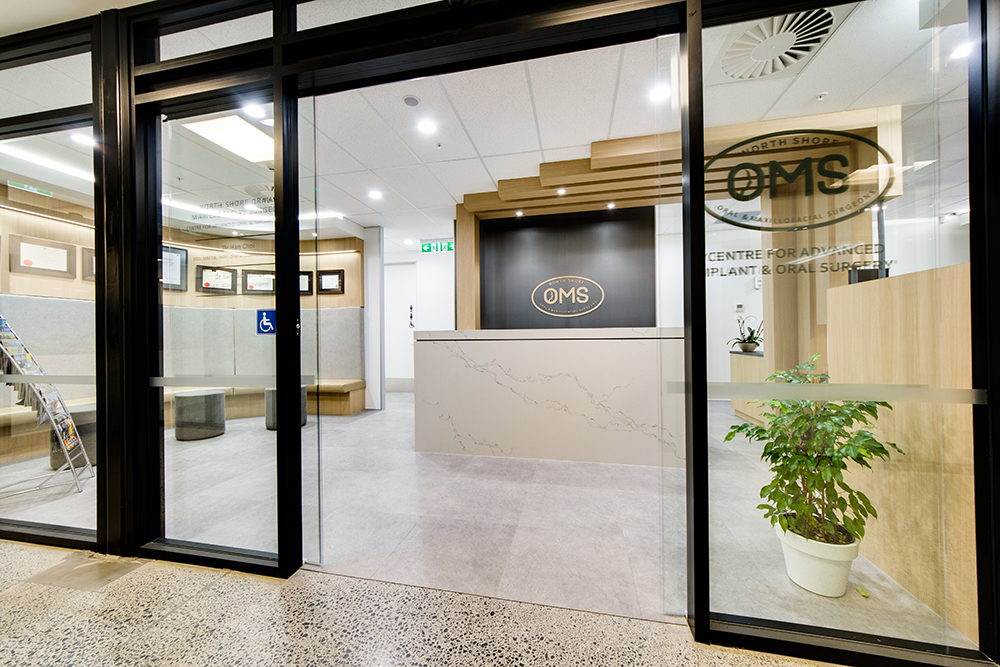It has been well documented that a common feeling associated with visiting the dentist for many patients is fear and anxiety. While there are extensive levels to patient dental anxiety and people are affected in many different ways, dental clinic owners have a responsibility to their patients to alleviate this at every touchpoint possible.
For over 30+ years, our vision has been focused on changing public perception of dentistry through our work of designing and constructing patient-focused dental clinics. This includes designing amazing dental spaces that look great, but more importantly, designing dental clinics that reduce or remove fear and anxiety around visiting the dentist.
To understand how to achieve this at the early design concept phases, first we must understand what triggers this common feeling for patients when visiting the dentist.
Some common dental clinic fear and anxiety factors:
- Previous negative/traumatic dental experiences
- Sensory triggers/stimuli – noises from dental tools, dental clinic smells that the patient associates with pain, seeing people exit the surgery room in pain, etc.
- Horrible experiences heard from family/friends/peers
- Negative portrayals of dentistry in the media
- Lack of knowledge of the dental clinic itself
So, how can we, together as dental clinic owners, professionals, designers and builders, fix this long-standing issue?
- Make patient experience a key focus – and earlier. Our ability to positively impact our patients’ experience doesn’t begin when you open your doors and begin treatment, but when we are in the design and concept phase. Considering the above negative stimuli can help us navigate and offer solutions within the design of the future or updated clinics.
- Staff interaction – while this is obvious, it’s important that we don’t assume that all patients walking into the dental clinic are completely comfortable or know how to navigate the dental clinic. Staff communication skills are critical in setting the atmosphere and mood of the dental clinic visit. Dental clinic design plays a role here, with controllable elements like positioning of reception desk for staff to make an effective initial greeting to establish a positive feeling within the patient for the journey to come.
- Smell, sound, sight – considerate dental clinic design can remove some of the above triggers that are sensory-based. For example, ensuring patients in the waiting room cannot hear the drilling or suction noises from the surgeries. We can also positively stimulate the senses with natural lighting, plants, technology, calming music, and creating pleasant smells within the space to remove the clinical/sterile smells associated with dentistry. It is also important to create consistency within your dental spaces. Having a calming, comfortable, bright, spacious waiting room counts for naught if your patients then move through to a surgery room that is dark, clinical, and confined. This can exacerbate a negative response from anxious patients.
- Parking / access – One of the most overlooked but crucial factors to dental anxiety is before the patient even steps through the door. Having adequate parking options on-site (where possible) is vital to avoiding pre-visit stress. Good wayfinding signage also helps streamline the patients’ visit and help them move through the clinic with confidence.
- Effective wayfinding signage – not knowing what to do, where to wait, or where to move next is a stressful trigger that can easily be avoided through positive staff practices. Dental clinic flow, along with clear, effective wayfinding signage is a low effort/low cost way to ease the burden on your patients and instil them with confidence as they move through the spaces of your clinic.
- The little things – There are small niceties that can make all the difference to an individual’s patient experience. Adding elements like access to technology can take the patient’s mind away from their current fears. Having a refreshment bar stocked with healthy drinks can turn a usually painful experience into a positive one. Your patients are perceptive and will notice and appreciate you making the effort to elevate their time in your space, rather than viewing them as a business transaction.



Smaller dental clinics need to be extra considerate of patient dental anxiety. In a smaller space, everything becomes closer, from waiting room seating to the noise that travels from a surgery room. Smaller dental clinics can successfully create a more intimate, calming space by introducing an abundance of natural light, or well thought out artificial lighting in waiting rooms and surgeries, as well as having an efficient patient flow throughout the clinic.
Reducing patient fear and anxiety has a multitude of positive outcomes. For the patient, they are less likely to delay or avoid their next consultation. This behaviour can result in poor oral health, as the patient isn’t likely to seek important preventative dental care, rather waiting until their dental health deteriorates to an emergency situation.
For your dental clinic, happier patients result in more consistent, recurring visits as well as driving more word-of-mouth referrals that increase your bottom line.
There will always be dental anxiety cases that require further intervention and can’t be alleviated by your space alone. However, considerate dental clinic design along with caring staff that put the patient needs first can create a calming, inviting clinic that reduces patient fear and anxiety, and gets them coming back without hesitation.



